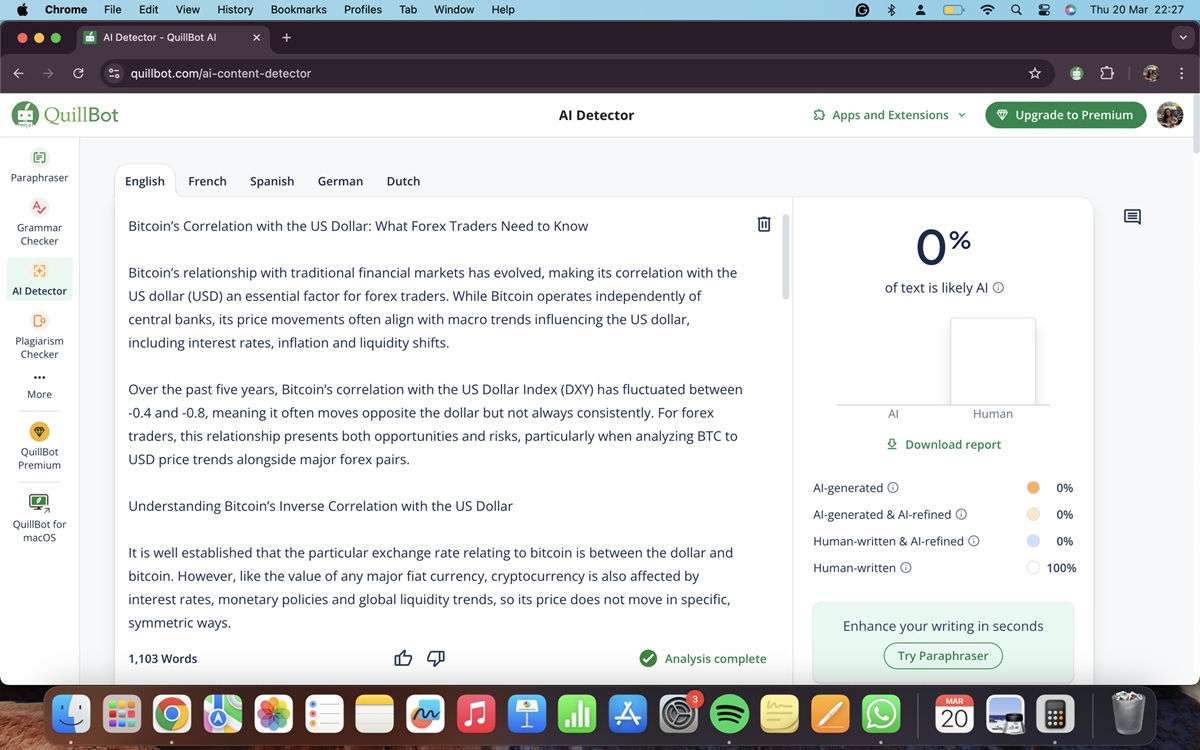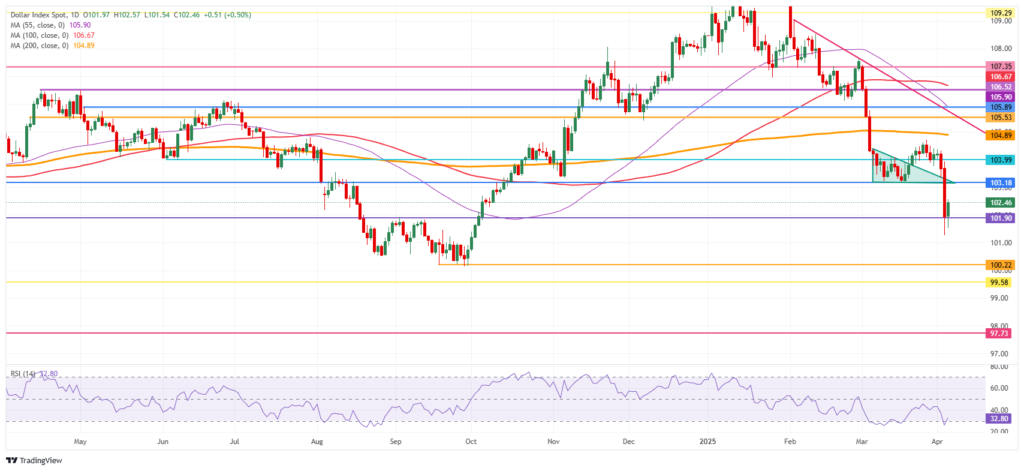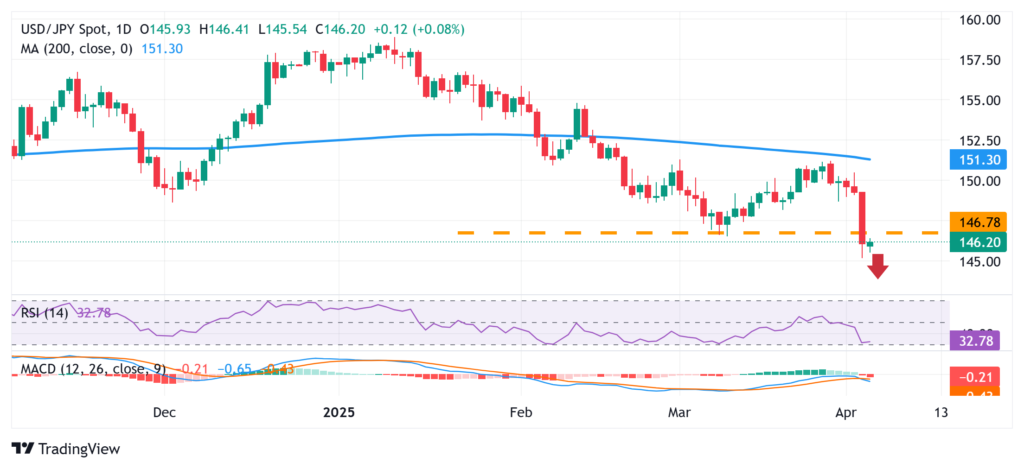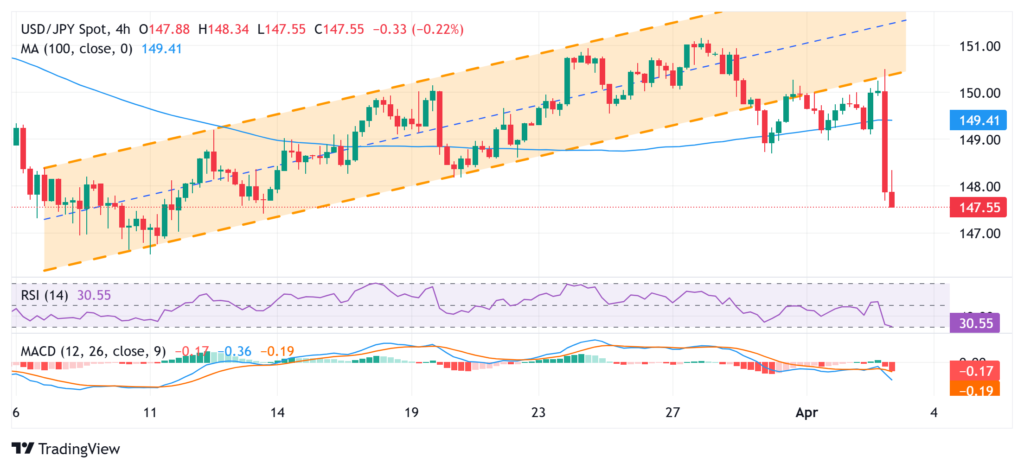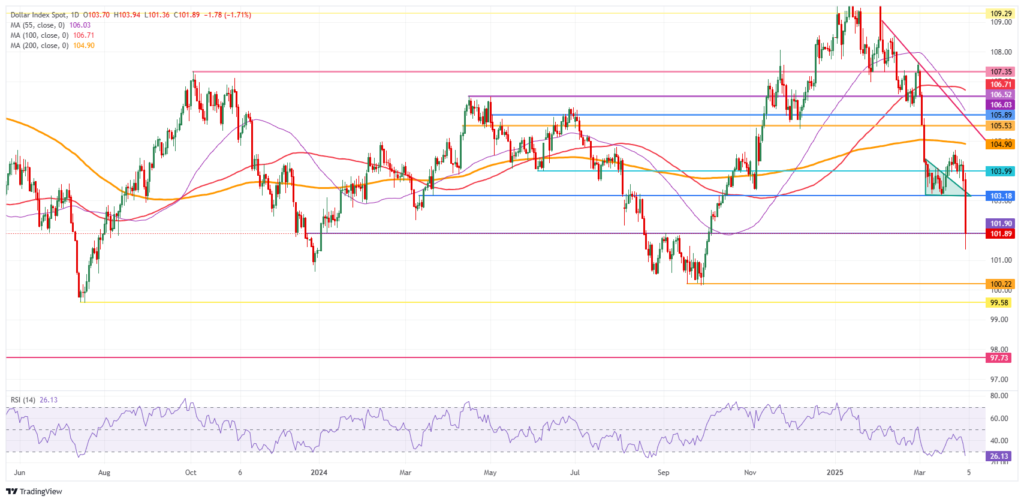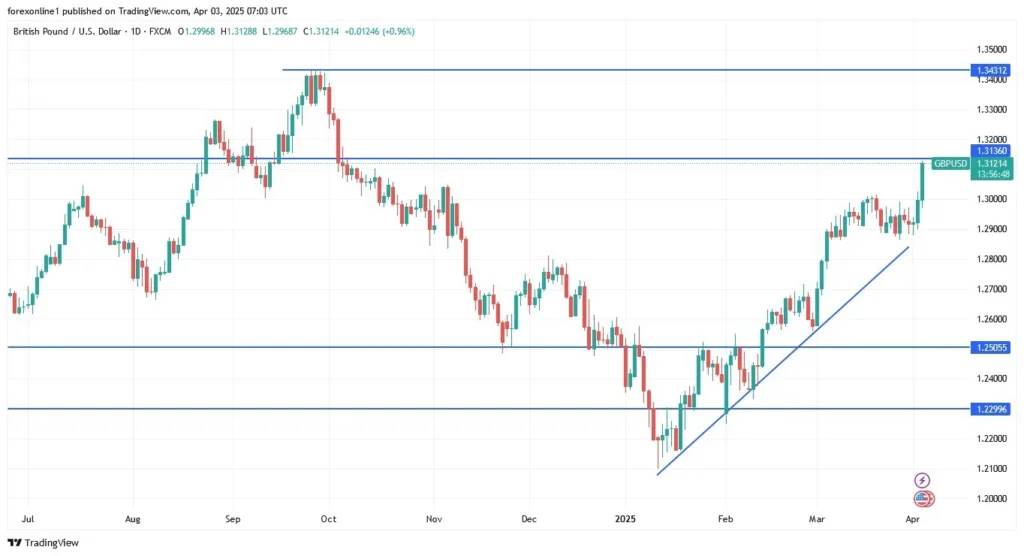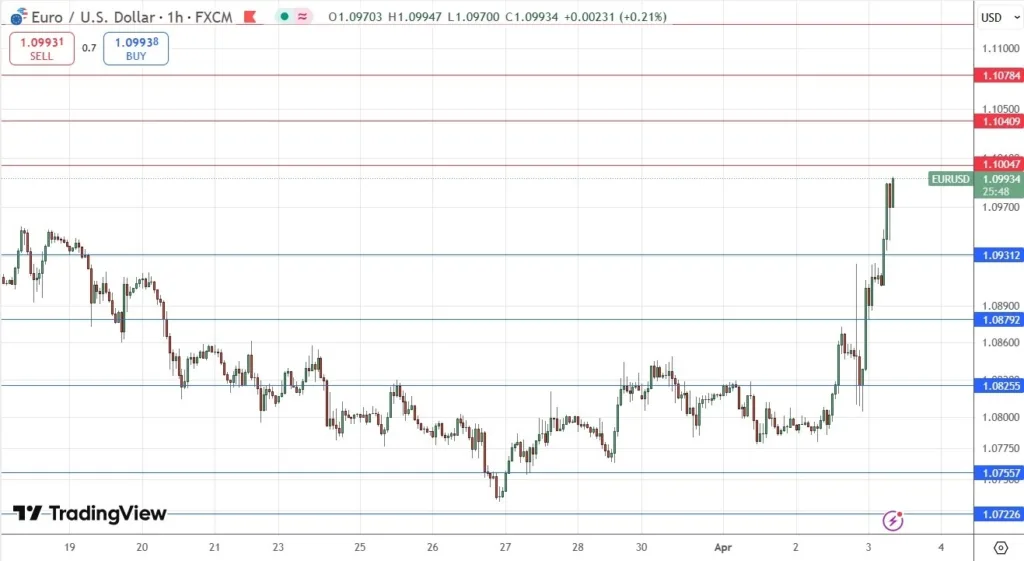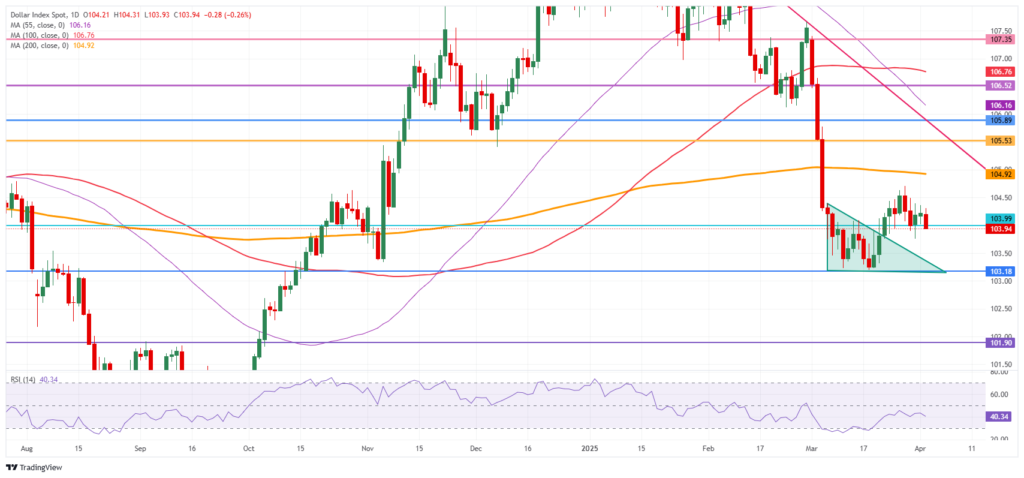Bitcoin’s relationship with traditional financial markets has evolved, making its correlation with the US dollar (USD) an essential factor for forex traders. While Bitcoin operates independently of central banks, its price movements often align with macrotrends influencing the US dollar, including interest rates, inflation and liquidity shifts.
Over the past five years, Bitcoin’s correlation with the US Dollar Index (DXY) has fluctuated between -0.4 and -0.8, meaning it often moves opposite the dollar but not always consistently. For forex traders, this relationship presents both opportunities and risks, particularly when analyzing BTC to USD price trends alongside major forex pairs.
Understanding Bitcoin’s Inverse Correlation with the US Dollar
It is well established that the particular exchange rate relating to bitcoin is between the dollar and bitcoin. However, like the value of any major fiat currency, cryptocurrency is also affected by interest rates, monetary policies and global liquidity trends, so its price does not move in specific, symmetric ways.
It is well known that bitcoin shows a strong negative correlation with the dollar index (DXY), which measures the value of the dollar against major currencies.
The Correlation Mechanism:
- If the dollar is on a higher value, then the value of bitcoin tends to drop.
- A decrease in the value of the dollar is usually accompanied by an increase in the value of Bitcoin.
Take the last quarter of 2022, for example. The DXY Index of America’s dollar rose to its highest mark in twenty years at 114. This was due to the continuous rate hikes of the Federal Reserve. During this period, Bitcoin dropped drastically from $47,000 to under $16,000 as speculative market assets were losing the funds they had received.
As seen at the end of 2023, when the dollar value decreased, investors shifted into taking calculated risks and were able to push Bitcoin’s value beyond 40,000.
The DXY had a correlation of -0.65 with Bitcoin in the first quarter of 2024, showing how deeply the world’s monetary system impacts Bitcoin.
The reason for stating Bitcoin and the US dollar’s inverse movement:
1. Rates of Interest and Monetary Policy
- Political decisions about its economy are the main reason for Bitcoin and the dollar’s inverse correlation.
- As the Federal Reserve adopts an expansionary monetary policy by increasing interest rates, the dollar appreciates compared to other currencies. Assets that are placed with higher risk, like Bitcoin, lose their demand.
- As liquidity in the market decreases and the interest rate is lowered, the demand for resources like Bitcoin increases.
When the Fed raised rates sharply in 2022, Bitcoin plummeted more than 60% as the cost of borrowing increased, leading to capital outflows from speculative markets.
2. Public Sentiment Towards the Market and Risk Desire
BTC behaves like a speculative liability and has a resemblance to currencies in forex trading and high-growth stocks.
- There is a decline in BTC when there is a movement to US and government bonds during the investment clockoff.
- Dollar outflow and BTC inflow are observed during investment clock periods.
Foreign exchange traders use BTC’s price movement as a marker for risk sentiment changes.
Bitcoin’s Effects on Major Currency Pairs
BTC is known for its epic, intense correlation with the DXY Metric, although it also has an impact on particular forex currency pairs that are sensitive to the US dollar’s strength or weak risk sentiment in addition to the dollar-BTC pair.
1. BTC with EUR/USD: The Greatest Macro Pair
- Considering the euro is 57.6 percent of the DXY basket, it’s evident that BTC negatively correlates with the dollar and positively correlates with eurodollar withdrawal.
- The value of EUR/USD increases as BTC increases while the dollar value drops.
- For instance, EUR/USD improves from 1.05 to 1.10; DXY falls when Bitcoin takes a leap of 35% in early 23 and trades between 1.05 and 1.10.
2. BTC and USD/JPY: Moving Towards Safe Haven
- Inversely, where there is a decline observed in Bitcoin, USD/JPY increases due to traders wanting to escape to the dollar safe.
3. BTC and Other Market Currencies (USD/TRY, USD/ARS, USD/ZAR)
- Bitcoin is gaining traction as a method of conserving wealth in economies grappling with rampant inflation and depreciation of their currency.
- In 2023, inflation in Argentina exceeded 100%, and trading volumes for Bitcoin soared when people used USD to attempt to safeguard the value of pesos.
With the rise in popularity of Bitcoin, forex traders are paying attention to the precious currency’s volatility with hopes of forecasting emerging and developed nations’ foreign exchange currencies.
Hedge Funds: How They Trade Forex and BTC and Their Institutional Impact
Hedge funds, asset managers and other institutional traders profit from large moves in price after trading Bitcoin along with the major currencies.
- Bitcoin is treated as a macro hedge by hedge funds that use it like gold during high inflation periods.
- Trading firms that specialize in forex add Bitcoin to trading strategies where other currencies are traded against the US dollar because it moves with the dollar and liquidity levels.
- Proprietary trading desks follow Bitcoin as they do currencies, especially against the arms, when people want to know if the dollar is strong or weak.
2024 witnessed a surge in the derivative trading volume of Bitcoin, surpassing 4 trillion US dollars, which clearly demonstrates a shift of the traditional currency investors towards Bitcoin.
Key Considerations for Forex Traders Watching BTC to USD
- Observe Bitcoin’s Correlation with DXY: The normal bias for Bitcoin is to weaken when the US dollar is strong. This changes on occasion due to politics or external factors.
- Abide by Central Bank Strategies: The Fed’s actions will dictate the economics of the US dollar and the strength of Bitcoin will heavily fluctuate with the transaction volume.
- Watch the Response of the Emerging Markets: Bitcoin has become popular in markets where local currency inflation renders native currency worthless.
- Determine an Investor’s Risk Level with BTC: Forex traders can tell the appetite for risk by monitoring changes in the price of Bitcoin.
- Bitcoin and BTC Position Trading: Many institutional traders sell the forecasted trend of a currency together with Bitcoin.
A Final Thought
Bitcoin’s integration into the economy makes it easier for traders to make decisions based on the BTC/USD price pairs. At times, Bitcoin’s inverse reaction to the DXY shows how interest rates, the state of liquidity in the economy and the risk appetite of the market affect both currencies.
Monitoring the movement of Bitcoin against the dollar and major currency pairs such as the euro to the dollar, dollar to yen and developing markets gives traders the Bitcoin economic advantage.
